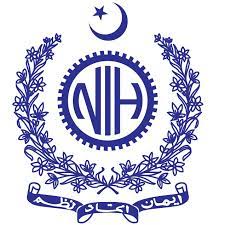
Health Research Institute (HRI)

National Institutes of Health, Ministry of National Health Services, Regulations and Coordination
Government of Pakistan
Non-communicable diseases (NCDs) Risk factors survey - Pakistan
Non communicable diseases (NCDs) encompass all diseases that are not transmitted from person to person. These include diabetes, hypertension, cancers, mental disorders, arthritis, injuries and accidents. NCDs pose a major challenge to both developed and developing countries. The main objectives of the survey were to identify the risk factors associated with non-communicable diseases and determine their magnitude in Pakistan. The survey was done in Punjab and Sindh provinces on 7710 participants of 18 years and above.
The standard WHO questionnaires was used for collection of information related to demographic characteristics (age, gender, marital status, education, and occupation), tobacco use, dietary habits, physical activity, history of raised blood pressure and diabetes. The height, weight, waist and blood pressure were measured and information was also collected on tobacco policy and injury. Data were collected electronically using Windows Mobile devices. The findings can be seen at below link.
Global Adult Tobacco Survey (GATS)
GATS was conducted in Pakistan in 2014 as household survey of persons 15 years and above by using standardised methodology. A total of 9856 households were sampled and one individual was randomly selected from each participating household to complete the survey. Survey information was collected electronically by using hand-held devices. Findings are as follows
Global Youth Tobacco Survey (GYTS)
GYTS uses a global standardized methodology that includes a two-stage sample design with schools selected proportional to enrolment size. The classrooms within selected schools are chosen randomly and all students in selected classes are invited to participate in the survey.
In Pakistan, GYTS was conducted in 2013 jointly by the Tobacco Control Cell and Pakistan Medical Research Council, under the coordination of the WHO Pakistan Office. A total of 8,723 eligible students in grades 7-10 completed the survey, of which 5,832 were aged 13-15 years. Findings can be seen at link below
Hepatitis B & C Survey Pakistan
This was the first survey on prevalence of hepatitis B and C in Pakistan conducted from 2007-2008. A sample size of 7000 houses all over Pakistan was calculated. A total of 47043 persons were screened. Detail findings can be seen at link below
Hepatitis B and C survey in General Population of Pakistan
Malaria Indicator Survey (MIS)
Malaria is a major public health problem in Pakistan. The Malaria Indicator Survey (MIS) was planned to measure the progress of interventions in 38 highly endemic districts and thus help in formulating the country future malaria elimination strategies. This was done in 11100 households.
Details can be seen at below link
National Health Survey of Pakistan
The National Health Survey of Pakistan (NHSP) was conceived to provide accurate health statistics to the Government of Pakistan for proper planning and policy development in the health sector. A complete history and description of the NHSP has been previously published. I The original stated objectives of the NHSP were developed by three collaborating institutions which have made this survey possible:2 Pakistan Medical Research Council (PM RC), Federal Bureau of Statistics (FBS), Government of Pakistan and National Centre for Health Statfstics (NCHS) of the Centre for Disease Control and Prevention (CDC), US Public Health Service. The objectives developed in the initial planning phase of the survey were:
- To provide a general health profile of the people of Pakistan with specific reference to various regions, urban/rural settings, the national estimates of major diseases, the overall health status, the disabilities and the health behavior.
- To provide a health profile · of high risk groups including children under five years of age, married women of reproductive age, and the elderly (60 years and above).
- To assess the utilization of health services (public and private), drugs, and traditional healers in the general population.
- To provide these data in a form relevant to the health program, policy, and planning needs of the Government of Pakistan.
Shahrah-e-Jamhuriat, G-5/2
Islamabad, Pakistan
Tel: 00-92-51-9216793, 00-92-51-9207386
Fax: 00-92-51-9216774